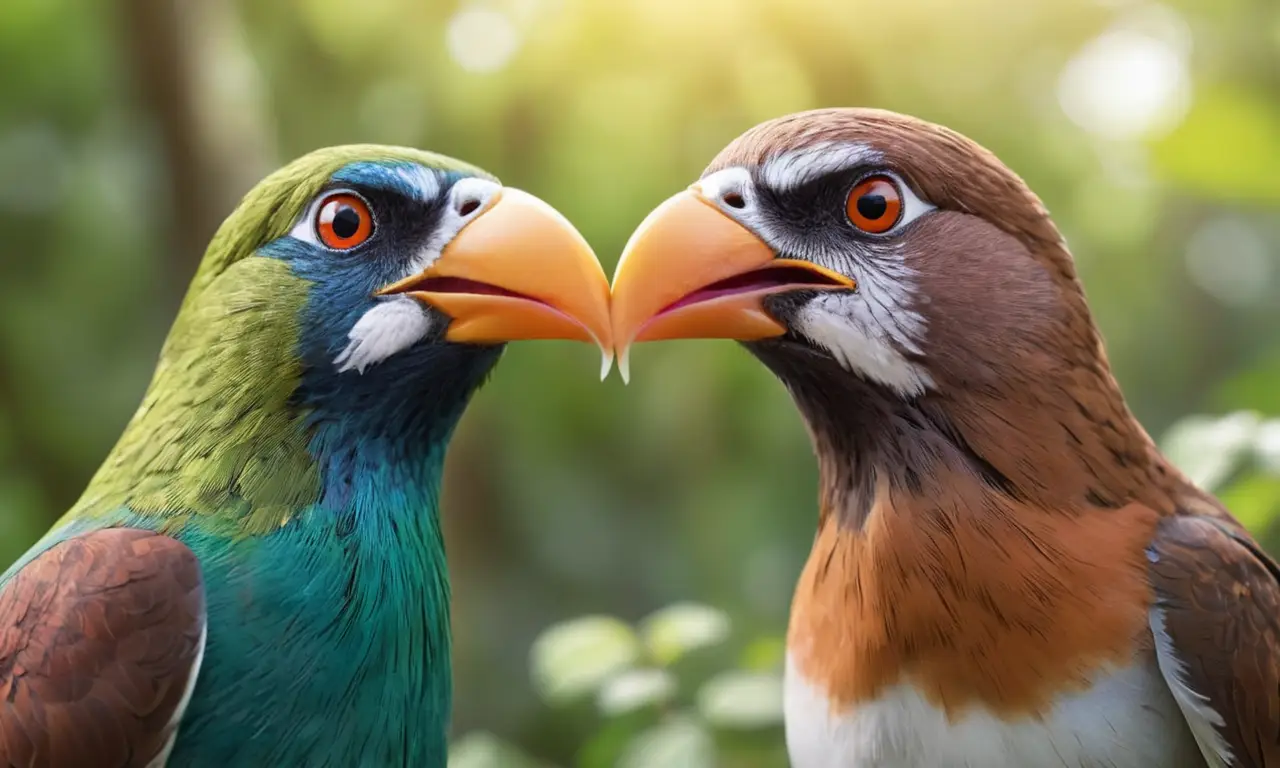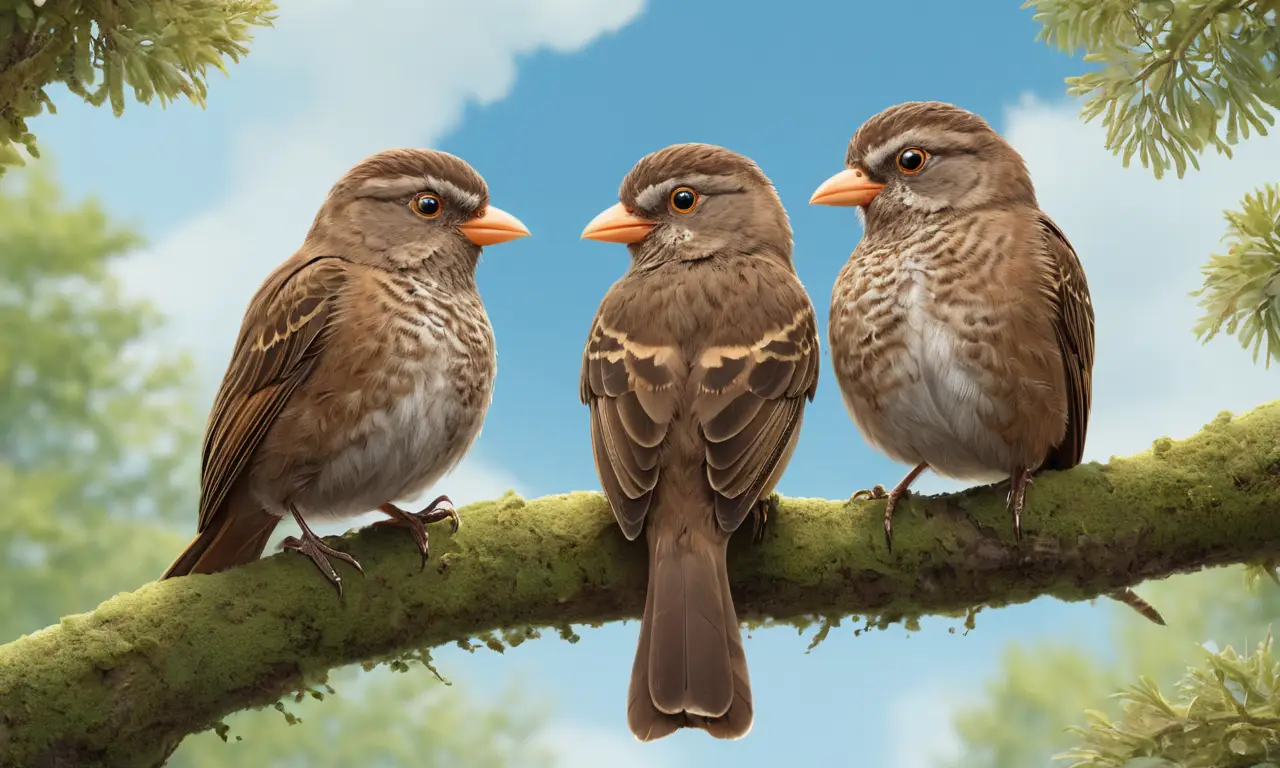
The avian world is a fascinating tapestry of diverse mating behaviors, each species exhibiting unique courtship rituals and strategies. One common question that arises is whether birds ever mate with their siblings. While it might seem counterintuitive, the answer is generally no. Birds have evolved sophisticated mechanisms to avoid inbreeding, ensuring genetic diversity within their populations. This article delves into the intricate world of bird mating, exploring the reasons behind sibling avoidance and the consequences of inbreeding.
This article will first examine typical bird mating behaviors, highlighting the complex courtship rituals and pair bonding strategies employed by various species. We will then delve into the concept of inbreeding avoidance, explaining its evolutionary significance and how it benefits bird populations. Subsequently, we’ll explore the rare instances where sibling mating occurs in birds, analyzing the specific circumstances that might lead to such behavior. Finally, we will discuss the detrimental effects of inbreeding on bird offspring, emphasizing the importance of genetic diversity for their survival and well-being.
Bird Mating Behaviors
Bird mating behaviors are incredibly diverse, ranging from elaborate courtship displays to complex nest-building strategies. Many species engage in intricate rituals involving singing, dancing, and presenting gifts to potential mates. These behaviors serve to attract partners, demonstrate fitness, and establish pair bonds. For instance, male peacocks display their vibrant tail feathers to impress females, while male bowerbirds construct elaborate nests adorned with colorful objects to attract attention.
Pair bonding is a crucial aspect of bird mating behavior, often leading to long-term relationships that extend beyond a single breeding season. Many species exhibit monogamous behavior, where a pair mates exclusively with each other. However, some birds practice polygamy, where one individual mates with multiple partners. Regardless of the mating system, birds invest significant time and energy in raising their young, sharing parental responsibilities such as nest building, incubation, and feeding.
Inbreeding Avoidance

Inbreeding avoidance is a fundamental principle governing bird mating behavior. It refers to the tendency of individuals to avoid mating with close relatives, such as siblings or parents. This behavior stems from the evolutionary advantage of maintaining genetic diversity within populations. When closely related individuals mate, their offspring inherit a higher proportion of identical genes, increasing the likelihood of expressing harmful recessive traits.
Inbreeding depression is the term used to describe the reduced fitness observed in offspring resulting from inbreeding. It can manifest as lower survival rates, decreased fertility, and increased susceptibility to diseases. To mitigate these risks, birds have evolved various mechanisms to avoid mating with relatives, including:
Mechanisms of Inbreeding Avoidance
- Dispersal: Many bird species exhibit dispersal behavior, where young individuals migrate away from their natal areas to establish territories and find mates outside their family group. This reduces the chances of encountering close relatives for mating.
- Mate Recognition: Birds often possess sophisticated mate recognition systems that allow them to distinguish between familiar and unfamiliar individuals. These systems may involve visual cues, vocalizations, or olfactory signals.
Genetic Diversity
Genetic diversity is crucial for the long-term survival and adaptability of bird populations. A diverse gene pool allows species to respond effectively to environmental changes, resist diseases, and maintain healthy population sizes. Inbreeding reduces genetic diversity, making populations more vulnerable to extinction.
Maintaining genetic diversity through inbreeding avoidance ensures that birds possess a wide range of traits, increasing their chances of survival in unpredictable environments. For example, some individuals may possess genes that confer resistance to specific diseases, while others may have adaptations for foraging in different habitats. This genetic variation allows populations to adapt and thrive over time.
Sibling Mating in Birds

While sibling mating is generally avoided by birds due to the risks of inbreeding depression, there are rare instances where it occurs. These cases often involve unusual circumstances, such as:
- Small Population Sizes: In isolated or fragmented populations with limited breeding individuals, the chances of encountering a non-related mate increase, potentially leading to sibling mating.
- Environmental Stressors: Extreme environmental conditions, such as food scarcity or habitat loss, can disrupt normal mating patterns and lead to increased inbreeding.
Factors Influencing Sibling Mating
- Social Structure: Some bird species exhibit complex social structures where individuals may live in close proximity for extended periods, increasing the likelihood of encountering relatives.
- Mate Availability: If suitable mates are scarce, birds may resort to mating with siblings as a last resort to ensure reproduction.
Negative Consequences of Inbreeding
Inbreeding can have severe consequences for bird populations, leading to a decline in fitness and increased vulnerability to extinction. The negative effects of inbreeding include:
- Reduced Offspring Viability: Inbred offspring often exhibit lower survival rates due to the expression of harmful recessive traits. They may be more susceptible to diseases, developmental abnormalities, or impaired immune function.
- Decreased Fertility: Inbreeding can lead to reduced fertility in both males and females, resulting in fewer offspring produced per breeding season.
Long-Term Impacts of Inbreeding
- Genetic Bottlenecks: Repeated inbreeding events can cause a significant reduction in genetic diversity, leading to a “genetic bottleneck” where populations become highly susceptible to environmental changes or disease outbreaks.
- Extinction Risk: Inbreeding depression can ultimately contribute to the extinction of bird species if it severely compromises their ability to survive and reproduce.
Conclusion
Bird mating behaviors are complex and fascinating, driven by evolutionary pressures to ensure genetic diversity and reproductive success. While sibling mating is generally avoided due to the risks of inbreeding depression, rare instances may occur under specific circumstances. The consequences of inbreeding can be detrimental to bird populations, leading to reduced offspring viability, decreased fertility, and increased susceptibility to diseases. Understanding these intricate relationships between bird mating behaviors and genetic diversity is crucial for conservation efforts aimed at protecting avian species and maintaining healthy ecosystems.
